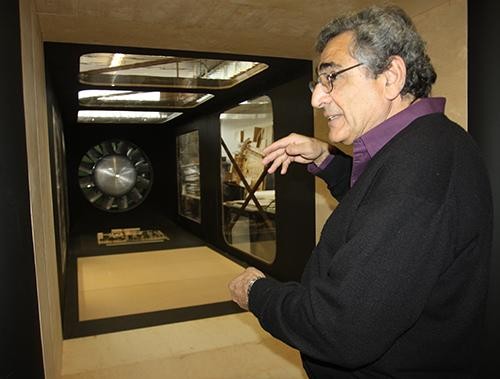These “”doctors”” are hoping their “”patients”” start to look a little green.
The House Energy Doctor program, started in 1986, is a course where graduate architecture students prescribe how buildings can save more energy. This semester, the UA Office of Sustainability suggested the students target the UA campus.
“”I told them if they fill all the campus buildings … if it is fully filled with PVs (photovolic panels), we cannot meet our demand,”” said Nader Chalfoun, House Energy Doctor Program director and professor of architecture and environmental sciences. “”So, if we really want to be a net zero campus and reduce our carbon footprint, it’s not by using … solar panels. The solution is, first, reduce the consumption that is currently consumed by the campus buildings. We need to cut that at least into half.””
The first buildings the program will examine are three Residence Life buildings: Maricopa Residence Hall, La Aldea graduate housing complex and Arizona-Sonora Residence Hall.
“”This campus pays $2 million every month, I think. In my theory, we can save 50 percent on consumption. That’s an easy task,”” Chalfoun said. “”If we can save 50 percent, then we have $1 million every month. For 12 months, we have $12 million. Then we can overcome the cuts the state is trying to give us, one hit after another.””
The process begins with training the students about energy conservation in buildings. The second step is an intensive energy audit where the students go and perform several tests on the building.
This process is expected to take three hours for Residence Life buildings.
Lastly, the prescription process takes place where students meet with building owners. Now that students understand the anatomy of the building, they can make suggestions on how to fix problems and how to use the building to its fullest potential.
“”They just love it. This is their passion. Especially that this is a project for the students and by the students and going back to the students,”” Chalfoun said. “”In a sustainable economy like today, they are very, very well prepared, especially for the job market. If any people are hiring student architects, today they are hiring those type, the sustainable. That is why my students are very popular and they are very demanded.””
Examining campus buildings is something Chalfoun has wanted to do for a long time.
A.J. Mach, an architecture graduate student with a design and energy concentration, thinks they will be able to improve students’ quality of life.
“”(If) we have students who are refreshed in good learning environments, then it provides for the whole,”” Mach said.
An all-female team will be assembled to audit Maricopa, the all-female residence hall. The students will be going into mostly public areas of the building,s and they think they will be able to use one student room to get an idea about how students’ rooms operate.
To complete their task, students have several instruments at their disposal, such as the UA-patented Azimuth protractor, a tool that allows them to determine a building’s exact location in relation to the sun. The UA is the only university with this instrument.
The UA is also home to a wind tunnel, an instrument held at only two other schools in the U.S.: the Massachusetts Institute of Technology and the University of California, Berkeley. Students use this, along with a building model, to study how air will move through the building.
Because of the Arizona heat, many buildings are “”leaky,”” meaning there are cracks under doorframes or gaps near windows where the air conditioning can leak out or heat can get in. This problem occurs so frequently because as it gets warmer, materials tend to expand, but when it begins to cool off, they will shrink back to normal size, causing gaps to appear. This is why the roads in Arizona deteriorate quickly, according to Chalfoun.
To discover where the gaps appear, students will pressurize a room using a door blaster which uses a mock doorframe with a large fan attachment. As the room is pressurized, students will use smoke sticks to release smoke and trace where it goes.
Investigating how a building uses daylight and absorbs heat is crucial to students’ investigations. For example, a darker color roof will absorb more heat and make a building warmer. Students use a photometer to see how much various surfaces reflect and absorb.
Another important aspect of having the right amount of daylight in a building is cutting down the use of electric light, which generates heat, creating a “”burden on your air conditioning,”” Chalfoun said.
Virginia Cardona, an architecture graduate student with a design and energy concentration, is curious to see how the three UA buildings the group is testing match up in efficiency because they were constructed several years apart.
“”It’s a different experience. We’re used to residential buildings,”” said Viviana Barquero, an architecture graduate student with a concentration in energy and design.
In the typical fall semester, students examine residential buildings and move on to bigger buildings in the spring, but looking at their own campus will be a different experience. The groups’ energy audit and assessment will take place around the end of February.
Mach described their group as a “”well-oiled machine”” noting that adjustments “”might be small changes but they have a big impact.””









